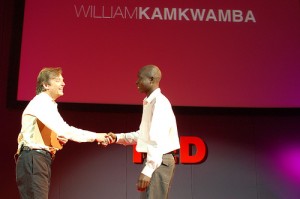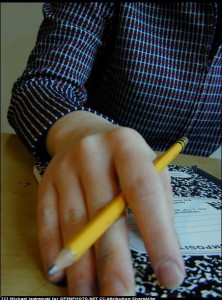![800px-Teacher, By the U.S. Census Bureau (the U.S. Census Bureau Facts for Feature Photos) [Public domain], via Wikimedia Commons](http://caroljcarter.com/wp-content/uploads/2011/01/800px-Teacher-300x202.jpg)
Many teachers are struggling as they consider how to help their students deal with the tragedy that struck Tucson this past weekend.  Below are some suggestions to help you teach about these topics at each grade level and in so doing, pay tribute to those who lost their lives last weekend.
Elementary School Teachers—
For grades under fifth, focus on positive healing actions students can take to help the families or the people in Tucson. They can make cards for the families of the victims, they can write letters to the editor about their hope for healing the families and they can bring to class some quotes or poems from home which they might discuss with their parents. Encourage your students to talk about this in class so that they have a safe place to process their feelings. Also, have students discuss the tragedy at home by sharing their feelings with their parents and coming up with ideas on how to heal through prayer, positive thoughts or any other meaningful gesture of compassion that they can then bring to share in class.
Talk as a class about the qualities of Christina Taylor Green. She was an “A†student, interested in politics and committed to making the world a better place. What is one commitment that each student can make to themselves and to the class in honor of Christina’s bravery and courage? How else can they honor such a wonderful person’s memory?  How do positive actions help us to pay tribute to those who have died?
Middle School Teachers—
Emotional Intelligence is a key topic for middle school students. Connect the event in Arizona to ways in which students can brainstorm positive ways to resolve conflict by answering questions like:
- How can you recognize and manage difficult emotions within yourself so they don’t become rage at someone else?
- How can you peacefully learn to consider other people’s points of view especially when you don’t share those views?
- How can you use language that is gentle and supportive instead of accusative and insulting?
- How can your own actions as a responsible, compassionate person inspire the best actions from others?
Leading a group discussion around these issues can also show students how to be better listeners, be more considerate and be more willing to have a measured, non-reactive response to opinions, religions, political views and lifestyles which differ from them. Creating a safe zone for tolerance is key to effective learning and strong communities.
Most of all, help students to understand the role of ritual and right action in crimes of hate and violence.  How can students stand up for right action and be beacons of tolerance and compassion for other students who are bullying and taking advantage of others?  How can you enlist the support of teachers, counselors and other school officials when you feel these matters are too challenging for you to handle?
High School Teachers-
Take this as an opportunity to brainstorm with students some of the ways in which students get emotionally stuck or “dug in†on their own views. Ask them to come up with  alternative perspectives to see things from alternate points of view.  How can they respect others with opposing view points? This is a basic principal of critical thinking and will serve students well throughout their school, professional and personal lives. Developing the ability to be compassionate as a student will help them deal with challenges throughout their adult lives.
Ask students to select  different roles of people (or have them work in pairs)  who are part of managing this tragedy and ask them to write about their role before class. Ask them to develop a positive, proactive plan for transforming the situation with as much composure and compassion possible for the people who are in the following roles:
- Mayor of the City of Tucson
- Sheriff of Tucson
- Speaker of the House of Representatives
- President of the United States
- Chief of Trauma at University Hospital
- Chaplains in the community conducting services
- Head of the newspaper
- Head of the FBI
- Federal Defender defending the assailant
Other roles or positions which could be considered—like should high schools and colleges have behavioral deans who can isolate and provide improvement plans to troubled students who pose a threat to others? Or, should gun laws be more strict for people who have issues of mental health afflictions?
Alternatively, lead a class discussion on how Tucson can be a model for the rest of the United States for the courage, strong spirit and citizenship displayed by the heroes who were involved. What else can the people of this community do to set a new standard for our country on how to peacefully and respectfully resolve conflict, protect our basic liberties and stand up for rights of citizens?  How can students act more peacefully and responsibly in class, at school, out of school and at home so that they are able to impact that outcome in their own lives as a start?
Finally, help students understand the role of ritual in remembering and honoring the sick or those who have died. Whether students pray, light a candle, make a personal commitment to one new, positive habit or decide to volunteer for a new cause, each way of remembering and honoring others is personal. Allowing students the time and space to be reflective and take small steps to heal their own hearts will help them to understand how, in their own way, they can begin to heal our nation.
Share this Article with Your Friends:
![By New York World-Telegram and the Sun staff photographer: Albertin, Walter, photographer. [Public domain], via Wikimedia Commons](http://caroljcarter.com/wp-content/uploads/2011/01/446px-Martin_Luther_King_Jr_NYWTS_4-223x300.jpg)










![450px-Einzelne_Kerze By 4028mdk09 (Own work) [CC-BY-SA-3.0 (www.creativecommons.org/licenses/by-sa/3.0)], via Wikimedia Commons](http://caroljcarter.com/wp-content/uploads/2011/01/450px-Einzelne_Kerze-225x300.jpg)
![By Eddie~S (Bully Free Zone Uploaded by Doktory) [CC-BY-2.0 (www.creativecommons.org/licenses/by/2.0)], via Wikimedia Commons](http://upload.wikimedia.org/wikipedia/commons/a/a2/Bully_Free_Zone.jpg)
![800px-Teacher, By the U.S. Census Bureau (the U.S. Census Bureau Facts for Feature Photos) [Public domain], via Wikimedia Commons](http://caroljcarter.com/wp-content/uploads/2011/01/800px-Teacher-300x202.jpg)

![By Andriyko_UA (Own work) [Public domain], via Wikimedia Commons](http://caroljcarter.com/wp-content/uploads/2011/01/Flag-map_of_Malawi-128x300.png)



